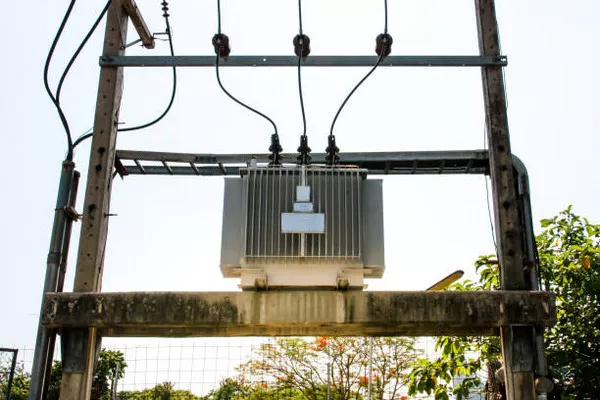Installing a doorbell system involves more than just mounting a button and a chime. Behind the scenes, a crucial component, the doorbell transformer, powers the entire setup. However, many homeowners overlook the importance of its placement. In this comprehensive guide, we’ll explore where the doorbell transformer should be located to ensure optimal functionality and safety.
Understanding the Doorbell Transformer
Before delving into its placement, let’s grasp the role of the doorbell transformer. This small yet vital device converts standard household voltage to a lower voltage suitable for doorbell operation. Typically, doorbell transformers reduce voltage from 120 volts to around 16 to 24 volts, depending on the system’s requirements. This lower voltage is safer for operating the doorbell circuit and prevents damage to the chime, button, or other components.
Factors Influencing Transformer Placement
Several factors influence the ideal location for installing a doorbell transformer. Considerations include:
Proximity to Power Source:
The transformer must be close to a power source, usually an electrical outlet or junction box. Placing it near the power source minimizes the length of wiring required, reducing voltage drop and ensuring efficient power delivery to the doorbell system.
Accessibility:
Accessibility is crucial for maintenance and troubleshooting. The transformer should be installed in a location easily reachable for repairs or replacements without requiring extensive dismantling or disruption.
Protection from Environmental Factors:
To prevent damage from moisture, dust, or extreme temperatures, the transformer should be shielded from environmental elements. Indoor locations or weatherproof enclosures are preferred to ensure the longevity of the device.
Adequate Ventilation:
While protecting the transformer from external elements, it’s essential to ensure adequate ventilation to prevent overheating. Installing the transformer in a well-ventilated area or using vents in the enclosure promotes airflow and dissipates heat effectively.
Optimal Locations for Doorbell Transformer Placement
Considering the factors mentioned above, several locations within a home are suitable for installing the doorbell transformer:
Near the Electrical Panel:
Placing the transformer close to the electrical panel is advantageous for accessing a power source. It minimizes wiring lengths and simplifies installation, especially if the electrical panel is located centrally in the house.
Inside a Mechanical Room or Closet:
Mechanical rooms or closets often house electrical panels and provide a secure, sheltered environment for the transformer. These locations offer protection from environmental factors and ensure easy access for maintenance.
Basement or Attic Spaces:
Basements and attics are commonly used for housing utilities and offer ample space for installing the transformer. Mounting it in these areas keeps it out of sight while providing accessibility for servicing.
Garage or Utility Room:
For homes with attached garages or utility rooms, these areas serve as convenient locations for transformer placement. They offer proximity to power sources and protection from the elements, making them suitable choices.
Installation Tips and Precautions
Regardless of the chosen location, following these installation tips and precautions ensures a safe and efficient setup:
Follow Manufacturer Guidelines:
Refer to the manufacturer’s instructions for specific guidelines regarding transformer installation. Adhering to these instructions ensures compliance with safety standards and optimal performance.
Use Proper Mounting Hardware:
Securely mount the transformer using appropriate hardware to prevent vibrations or movement that could damage the device or wiring connections.
Verify Voltage Compatibility:
Before installation, verify that the transformer’s output voltage matches the requirements of the doorbell system. Using an incompatible transformer can lead to malfunction or damage to the doorbell components.
Ensure Proper Grounding:
Properly ground the transformer according to local electrical codes to minimize the risk of electrical shock or fire hazards.
Label Circuit Breakers:
Label the circuit breaker corresponding to the doorbell transformer for easy identification during maintenance or emergencies.
Frequently Asked Questions (FAQs)
1. Can I install the doorbell transformer outdoors?
While some transformers are designed for outdoor use and come with weatherproof enclosures, it’s generally recommended to install them indoors or in sheltered locations. Outdoor installations expose the transformer to harsh environmental conditions, increasing the risk of damage and reducing its lifespan.
2. What should I do if the doorbell transformer gets hot during operation?
If the transformer feels excessively hot to the touch during normal operation, it may indicate a problem such as overloading or inadequate ventilation. Immediately disconnect power to the transformer and consult a qualified electrician to diagnose and rectify the issue.
3. Can I relocate the doorbell transformer after it’s been installed?
Relocating the transformer is possible but may require rewiring and adjustments to ensure proper functionality. Before relocating the transformer, consult a professional electrician to assess the feasibility and implications of the move.
See Also How Does An Auto Transformer Work
Conclusion
The doorbell transformer plays a crucial role in powering the doorbell system, and its placement significantly impacts performance and safety. By considering factors such as proximity to power sources, accessibility, and environmental protection, homeowners can ensure optimal placement for their doorbell transformers. Following manufacturer guidelines and installation best practices further ensures a reliable and efficient doorbell setup for years to come.

